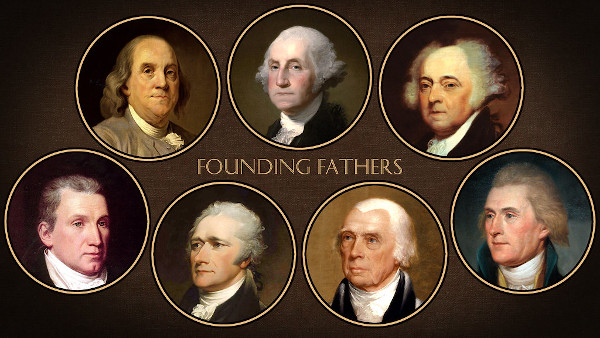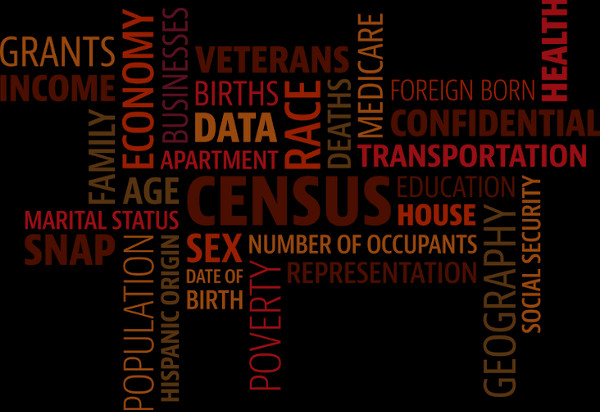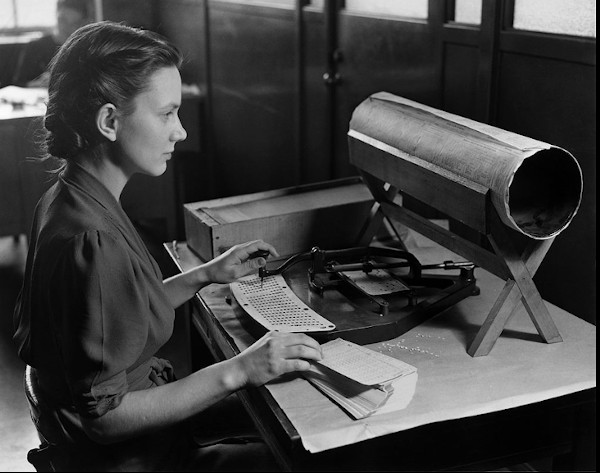Why Controversy Has Often Loomed Large in the History of the U.S. Census

The 2020 U.S. Census is underway and in full swing. In the middle of March, right during the unfortunate uptick of the coronavirus pandemic, the U.S. Census Bureau began its efforts to conduct a headcount of all residents of the nation.
Usually with a timeframe of approximately four months to allow people to respond to the questionnaire, the bureau has now revised its schedule to accommodate the ongoing health crisis, extending the response deadline as far back as October. This year also marks the first time that the population headcount will be based almost entirely online, so that respondents will be able to submit their answers through the internet rather than by mail, thus allowing for a reduction of the usual Census agents that would normally go door to door to update records or collect this vital information (although this ground force will still be strategically deployed, as necessary). This means that most of us don’t have an excuse not to respond to this year’s Census in one form or another, and the importance of doing so cannot be overstated.
The Census is mandated by the U.S. Constitution, established by the Founding Fathers as an important facet of a working democracy. The first Census was conducted soon after the birth of the nation, when in 1790 federal Marshalls mounted their horses and fanned out throughout the newly formed United States of America to tally up its population (just short of 4 million people at the time, although George Washington and Thomas Jefferson apparently doubted the accuracy of this count and estimated the number of people to be much higher). Since that first mounted expedition, the federal government stages and launches its decennial population count, with many hiccups along the way and with questions that sometimes changed to reflect the panorama of the time.
For example, the 1880 Census, in addition to the usual headcount, also requested information on the type of soil and terrain of the land, whether it was hilly and if the soil was alluvial or clay. Native Americans were not counted at all until 1870—what that really means is that there was no count at all for Native American peoples in U.S. territory for the first 100 years of the nation’s history.

The word “Negro” was dropped from the race/ethnicity category beginning just with this most recent 2020 Census, after having been on the form since at least 1950 to accommodate an older cohort of African-Americans who self-identified as “Negro.” From 1920 to 1940, Asian-Indians were categorized as “Hindus” regardless of their religion. And a 1902 directive instructed agents taking Census data from Native tribes to assign women and children the surname of the husband or father even though this is not the way many Native nations assign names, and to translate animal names to English but to avoid “foolish, cumbersome, or uncouth translations which would handicap a self-respecting person.”
Yet, the worth and value of the Census is paramount. One of the most well-known uses of the Census is to establish the number of congressional seats in the U.S. House of Representatives. At its core, being a tally of persons living in the country, the Census serves as the official federal count for each state and district, thus determining how many representatives a state sends to Congress; to this day, the number of seats each state holds in the House depends entirely on Census results.
But the Census has many other applications, and the data it provides is as rich as its history. To have an accurate population count is essential not only to determine the number of representatives sent to the lower house of Congress, but also for a myriad of other things that may not be readily apparent. For instance, Congress also uses population counts to determine federal grants, aid, and other government-provided funds to congressional districts. In other words, it helps determine how much federal money is given to states to help fund hospitals, schools, community colleges, etc.
The Census can even be used to establish officially recognized Native American tribes. During the 1970s, for example, Census counts played a key role in establishing the sovereignty of the Mashpee Wampanoag tribe in Massachusetts, when they were asked to prove that they were a culturally unified people when the Census data proved inconclusive. At the time, a jury found that the Mashpee were not really native, a decision that was eventually overturned in 2007, when the Mashpee were finally afforded the title of federally recognized tribe which, among other things, secured them with a land trust and native nation sovereignty. In 2018, the U.S. government questioned the tribe’s land trust by citing the Indian Reorganization Act of 1934, and as recent as March of this year, the Trump administration informed the Mashpee people that the government would revoke the tribe’s reservation status (although a judge was not pleased by this turn of events and the case is currently pending). And all this because of inaccurate Census data.

This question of race, ethnicity, and origins has always been a thorny point throughout the history of the Census, least of all because its job is to basically identify any person who count as “people.” The first Census of 1790 counted a total of about 700,000 slaves in the U.S., or about 18 percent of the population. In the South alone, 34 percent of the Southern population were slaves. But by then, the Three-Fifths Compromise had been reached three years prior during the U.S. Constitutional Convention—the same convention that eventually led to the drafting of the Constitution—to appease the Northern states which argued that the high number of slaves would give Southern states unfair legislative control, and so that the Southern states, in turn, would not bemoan any taxes related to population count. And so that first Census asked each household only five things: number of white males 16 or older; number of white males under 16; number of white females; any other free peoples; and number of slaves. In fact, the same article of the Constitution that establishes the Census as law (Article I, Section 2, Clause 3), also establishes the three-fifths count of non-free persons.
Meanwhile, the government’s first attempt to count its Hispanic population came in 1930, when it added a “Mexican” category to that year’s Census. It was the first and only time that the Census included this question. It decided to drop it from future forms for many reasons, but also partly because the Mexican government itself complained about the bias of this question, given that the entire Southwest used to be part of Mexico and the United States had agreed to treat residents there as citizens.
It must also be noted that Puerto Ricans had received U.S. citizenship in 1917, which meant that actual American citizens from Puerto Rico only had the option of choosing “Mexican” if they wanted to be categorized correctly as being of Hispanic origin. It wasn’t until 1970 when the Census included questions about ethnicity and place of origin again, now expanded to broader categories. This time around, this question still made a bit of a mess but for different reasons. In an ironic flop, during this 1970 Census, hundreds of thousands of people living in the Southern and Central regions of the United States misidentified themselves as South or Central American in the ethnicity category. Interestingly enough, later research found that the total data reported by the Census was still about 500,000 less than the estimated number of Hispanic-Americans in the country, even though over 1 million of the responses collected had not come from actual Hispanic-Americans, but from those in the Central and Southern United States who had mistakenly self-identified. Before this, the government simply categorized the Hispanic population as white.
The need to properly categorize the subpopulations of the country is important beyond the simple desire of knowing our demographics. This is because different populations in any given part of the country have different needs, and an accurate count can help to ensure that the appropriate federal assistance is being given, or at least proportionally distributed to meet the necessities of a subpopulation. For example, Native American youth faces a higher rate of suicide and substance abuse than any other racial or ethnic group in the U.S., and an accurate count of a reservation’s adolescents can help tribal leaders and Congress implement effective policies to combat this crisis, perhaps by funding mental health programs or providing substance abuse counseling and rehabilitation centers.

Similarly, a correct Census count of persons who have English limited proficiency in a congressional district can even help ensure that there are enough interpreters and language assistance during elections and at voting sites, in an attempt to protect citizens’ right to vote and ensure that they are all given sufficient information to make informed decisions in a language they speak or understand.
This is why minority leaders have urged the subpopulations of the country not to discard the importance of the Census, encouraging them to take its completion seriously. Although this is easier said than done given that, especially in minority populations, there is a spread of misinformation about the Census and a general mistrust of the government. Mistrust is one of reasons the citizenship question had been such a point of contention when the Trump administration announced its plan to include it on this year’s Census. It was first posed as a way to help enforce the Voting Rights Act, under the guise that having a count of actual voting-age citizens would help the Department of Justice oversee any districts that may be tempted to disenfranchise minorities. (In a way, the Census does help enforce the Voting Rights Act—see above about language assistance at the voting booth).
When that rationale failed to convince the courts given the administration’s history of overexaggerating voter-fraud conspiracies, the Trump White House then floated a myriad of other possible reasons for wanting to include the citizenship question on the Census, one of them being districting based on citizenship. Basically, the Census data would open the possibility of drawing congressional districts based on the population count of eligible voters.
Experts were quick to criticize this strategy, noting that the drawing of districts based on voting-age citizens would be advantageous to Republicans and non-Hispanic whites. This is a conclusion that the GOP’s own master strategist Thomas Hofeller arrived at during his 2015 study of gerrymandering which, in a bonkers turn of events, we only know about because his estranged daughter found thumb drives with her father’s work after he died and provided them to Common Cause, which challenged the citizenship question in federal court citing Hofeller’s own study. But alas, the Constitution may prohibit this anyway, as it calls for a democracy that represents all its people, including those who may not be able to cast a ballot as is the case for children, green-card holders, and some felons, for example.
Activists also argued that inclusion of the citizenship question would discourage immigrants from responding to the Census. This is because while undocumented immigrants may not be drawn to taking the Census themselves, there are many immigrant household in which an undocumented alien may live. In other words, it would have discouraged documented immigrants and citizens alike to respond to the Census if an undocumented immigrant resides in their household, fearing retaliation from the government and immigration agencies.

And this fear is not unfounded. Census data is supposed to be completely confidential, and it is never to be shared with other government agencies, except as applicable and compartmentalized for official and legal purposes. But the Census Bureau was finally forced to admit that it had played a role in the internment of Japanese-Americans during World War II.
In 2000, after a study uncovered proof of the Census Bureau’s complicity, the agency recognized its participation and issued an apology, in which then Census Bureau Director Kenneth Prewitt acknowledged that the bureau’s staff had proactively cooperated with internment efforts.
Incidentally, Mr. Prewitt has been a vocal critic of the citizenship question being included on this year’s Census based, in part, to this misuse of power back in the 1940s. A follow-up study in 2007 revealed that the bureau had provided microdata to the Secret Service, including individual Japanese-Americans’ names and addresses. There are some technicalities here; for example, the sharing of this information was technically made legal under the emergency provisions of the Second Powers Act of 1942. But its participation still contradicted the bureau’s own promises printed on their form:
“Only sworn census employees will see your statements. Data collected will be used solely for preparing statistical information concerning the Nation’s population, resources, and business activities. Your Census Reports Cannot Be Used for Purposes of Taxation, Regulation, or Investigation.”
Normal privacy protections have been reinstated, of course, and other restrictions have since been put in place. But it isn’t hard to understand why immigrants may have misgivings about sharing such personal information with a government agency, especially since these “protections” can easily be rescinded, say, by an executive order establishing a state of emergency (although one would hope that such an action would be challenged in the courts, just as the citizenship question was).
Thankfully, there is no citizenship question on this year’s Census. Instead, the questions on the form are the standard fare in attempt to accurately identify the country’s demographics. There is also a myriad of ways in which to respond to the Census, including online, by mail, and even by phone, in 13 different languages. The Census is more than just a headcount; it is a vital tool that is used to create policies that directly affect all of us and to ensure that enough federal funding is allocated appropriately.
For more information on how to respond to the 2020 Census, you can visit the Bureau’s official site.
Author Bio:
Angelo Franco is Highbrow Magazine’s chief features writer.
For Highbrow Magazine
Image Sources:
--Coffee (Pixabay, Creative Commons)
--DonkeyHote (Flickr, Creative Commons)
--Defense Department (Creative Commons)
-- FDR Presidential Library c/o: Dwight Hammack, U.S. Bureau of the Census, Wikipedia.org)
-- U.S. National Archives and Records Administration (Wikipedia.org, Creative Commons)































































































































































































































































































































